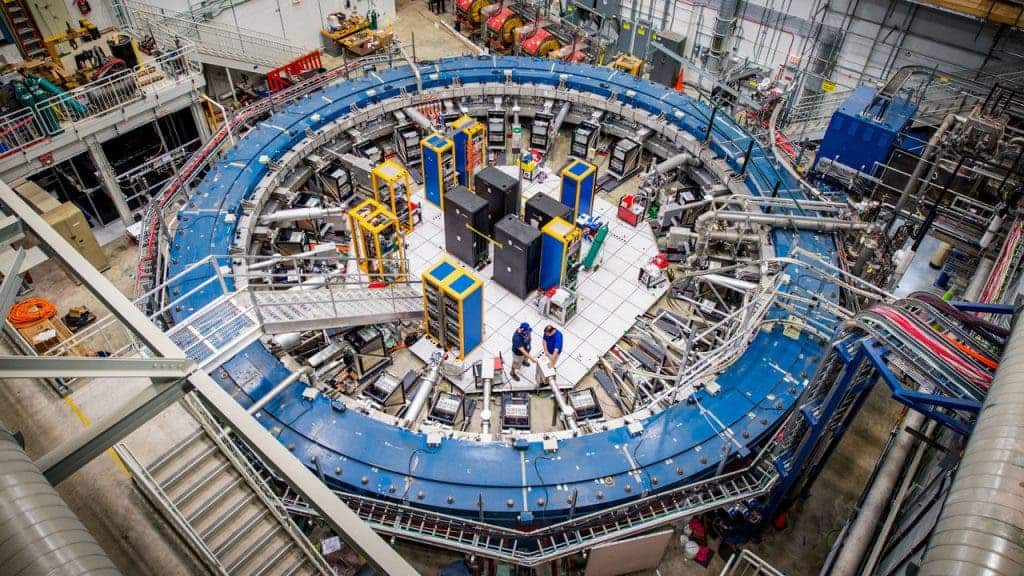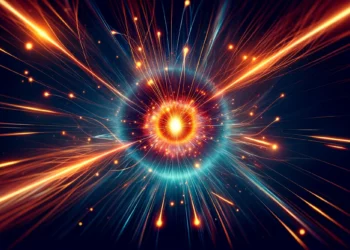
The Standard Model of particle physics explains how the basic building blocks of matter interact, governed by four fundamental forces. It’s basically our best theory of how the universe works and ever since it was first introduced in the 1970s, scientists have thrown everything they’ve got at it to see where it fails. It hasn’t cracked once — but that may change in light of recent measurements of a subatomic particle known as the muon.
The muon is an elementary subatomic particle similar to the electron, but 207 times heavier. They are made when high-energy particles called cosmic rays slam into atoms in Earth’s atmosphere. But due to their unstable nature, they decay quite quickly into electrons and neutrinos in a fraction of a second after they come into existence.
At the Fermi National Accelerator Laboratory (Fermilab) in Batavia, Illinois, physicists have been launching these muon particles around a 14-meter ring that has a certain magnetic field.
According to the Standard Model, the magnetic field should make the muons wobble, somewhat like little compass needles, at a predictable rate. But in a new set of studies reported today by more than 200 physicists, the authors reported a slightly higher than expected wobbling rate.
The anomaly for the Muon g-2 experiment is 4.1 sigma, meaning it is more than 4 standard deviations from the mean. To put it another way, there is a one in 40,000 chance that the results of the experiments are due to some statistical fluke. However, the golden standard in particle physics is 5 sigma, which corresponds to 1 in 3.5 million odds of random fluctuation.
That being said, these results aren’t definitive so the experiments need to be repeated, preferably by other independent research groups. It wouldn’t be that crazy either, since results dating back to 2001 for g-2 also found that the muon is slightly more magnetic than theory predicts. There’s something to this.
If these latest measurements are confirmed, the consequences will be extremely far-reaching. These findings announced today at a symposium at Fermilab suggest that there are other yet unknown subatomic particles popping in and out of existence in the vacuum, thereby causing the increment of change in magnetism.
What could these particles be and what fundamental force are they associated with? We have no idea, which means the Standard Model may have a big gaping hole in it.
It wouldn’t be a stretch to call this discovery — if confirmed by other experiments — the biggest discovery in physics since the much heralded detection of the Higgs boson in 2012.
The Standard Model is really a thing of beauty. It mathematically lays out the 17 building blocks of nature: six quarks, six leptons, four force-carrier particles, and the Higgs boson. But despite its phenomenal success, it’s not perfect. There are still some important questions that the Standard Model fails to answer, such as why there is such a thing as dark matter or dark energy in the universe. In fact, another unanswered question would be why there is so much matter in the universe in the first place, presuming matter and antimatter should have been produced in equal parts during the Big Bang and the two ought to have annihilated each other. Yet, here we are!
It is thanks to such inquiries that scientists are fully aware that their work is far from done. Whether or not Fermilab is standing on a holy grail of physics remains to be seen in the future as more data and improved theoretical calculations surface.






